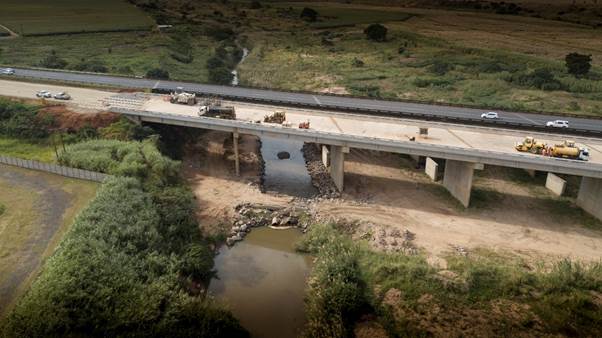Investments in roads infrastructure upgrades, especially in rural and underdeveloped communities, provides an opportunity for generating economic growth and alleviating poverty.

Tenders to the value of R8.3-billion for construction work in KwaZulu-Natal will be issued within the current financial year as announced by President Cyril Ramaphosa.
This will include seven major tenders on the N3 which will go out in the next three months once the regulatory approvals have been received and land acquisition finalised.
This massive programme that will stretch over several years will increase road safety, ease traffic flows as well as access to and from industrial areas between these two major cities in KwaZulu-Natal.
It is part of a R40-billion two to three-year investment programme by the road’s agency.
Looking at a bigger picture for the N3 and N2 upgrades, a total of 12 projects is expected to create more than 23 500 direct job opportunities.
The programme will take 8 to 10 years to be completed.
Locals benefit
Direct job opportunities are actual individuals per ID number on site based on SANRAL averages over time of 262 jobs per R100-million project value.
In the case of community projects, of which two (consisting of multiple packages) are planned in the province, 290 jobs on average.
“This excludes SANRAL’s continuous routine road maintenance as part of our robust preventative maintenance strategy aimed at taking care of the road assets we have,” said Dumisani Nkabinde, SANRAL’s Eastern Region manager.
Treasury has allocated about R21.5-billion per year for the maintenance and improvement of SANRAL’s 19 262km non-toll network, including the national road network in KwaZulu-Natal.
The SANRAL network forms the backbone of the country’s transport system the country depends heavily on road transport for the movement of 94% of all people and 87% of all goods in the country.
The national road network serves as a catalyst for balanced economic growth, business confidence, investment and the transformation of society.
Transforming the industry
A growing share of contracts will be allocated to black-owned construction companies and enterprises owned by women, the youth and the disabled.
In its long-term vision, Horizon 2030, SANRAL committed itself to the transformation of the construction and engineering sectors through the allocation of tenders to new entrants in these sectors.
Over the past six months SANRAL has brokered memorandums of understanding between emerging companies and major suppliers of construction equipment and machinery.
These partnerships give black-owned companies greater access to financing, expertise and the sophisticated equipment required to tender for larger contracts.
Dumisani Nkabinde, Regional Manager of SANRAL Eastern region, said: “The upgrades are part of Government’s rollout of Strategic Infrastructure Projects in line with the National Development Plan, specifically the Strategic Integrated Projects, of which the N2 and N3 upgrades are within the SIP2 program.
“The N3 upgrades will solve bottlenecks between Durban and Pietermaritzburg. Daily, the N3’s traffic consists of a minimum of 45 000 vehicles a day. If the N3 is not upgraded, the potential loss we as South Africans will face is R1 billion per annum.”
More than roads
Back in 2015, the economic study undertaken as part of SIP revealed that closure of the N3 was estimated to cost the economy between R250 000 and R300 000 per hour.
“Therefore, the N2 and N3 are not just roads – they are the epitome of empowerment and are essentially South Africa’s lifelines for the transportation of freight from Durban to Gauteng, the economic hub of the country,” said Nkabinde.
Nkabinde concluded that investment in roads infrastructure upgrades, especially in rural and underdeveloped communities, provides an opportunity for generating economic growth, alleviating poverty, reducing the scourge of inequality and increasing international competitiveness.

